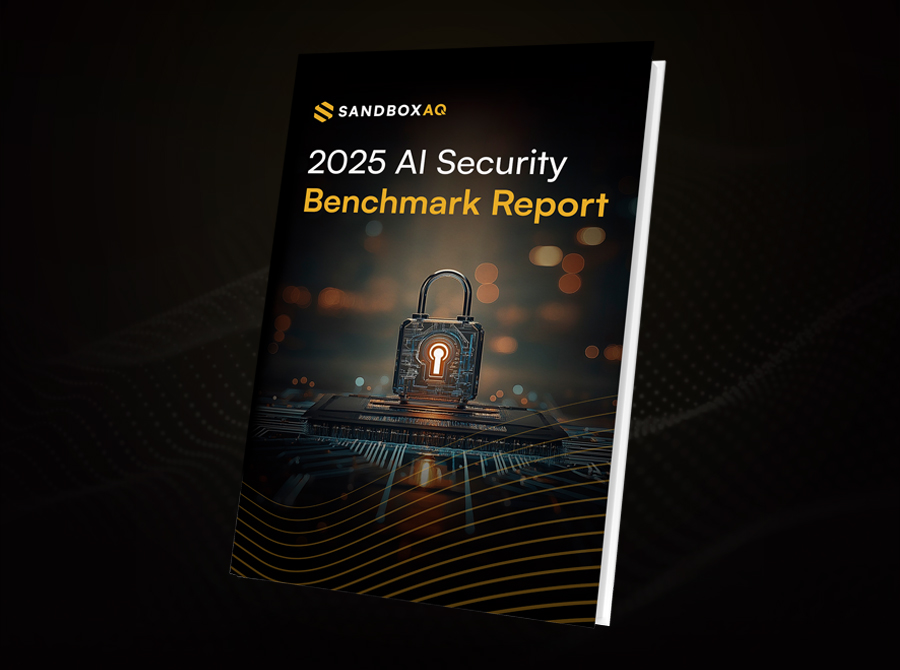Enterprise leaders face a stark challenge: while AI adoption accelerates across critical business functions, security preparedness lags dangerously behind. SandboxAQ's inaugural 2025 AI Security Benchmark Report reveals a troubling "confidence gap" that should concern every CISO.
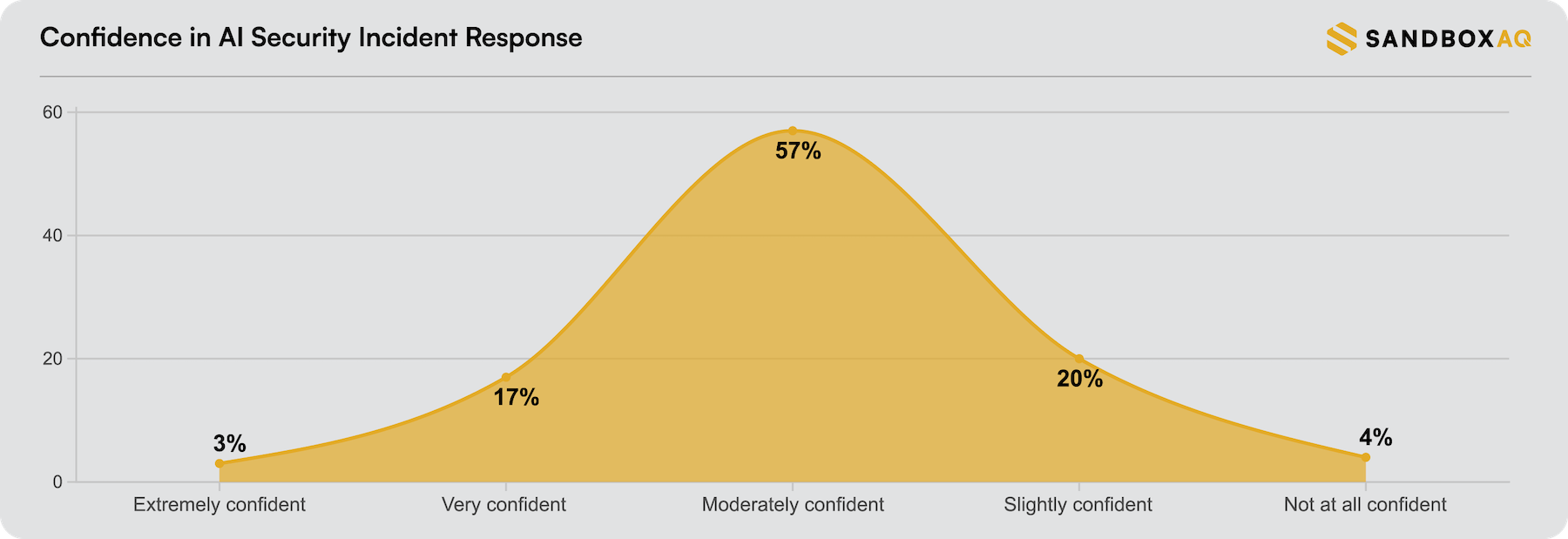

The Reality Behind the Confidence
Our survey of over 100 senior security executives across the US and EU exposes a fundamental disconnect:
- 79% of organizations run AI in production environments
- 77% of security leaders feel confident defending against AI threats
- But only 6% have implemented comprehensive AI-native security
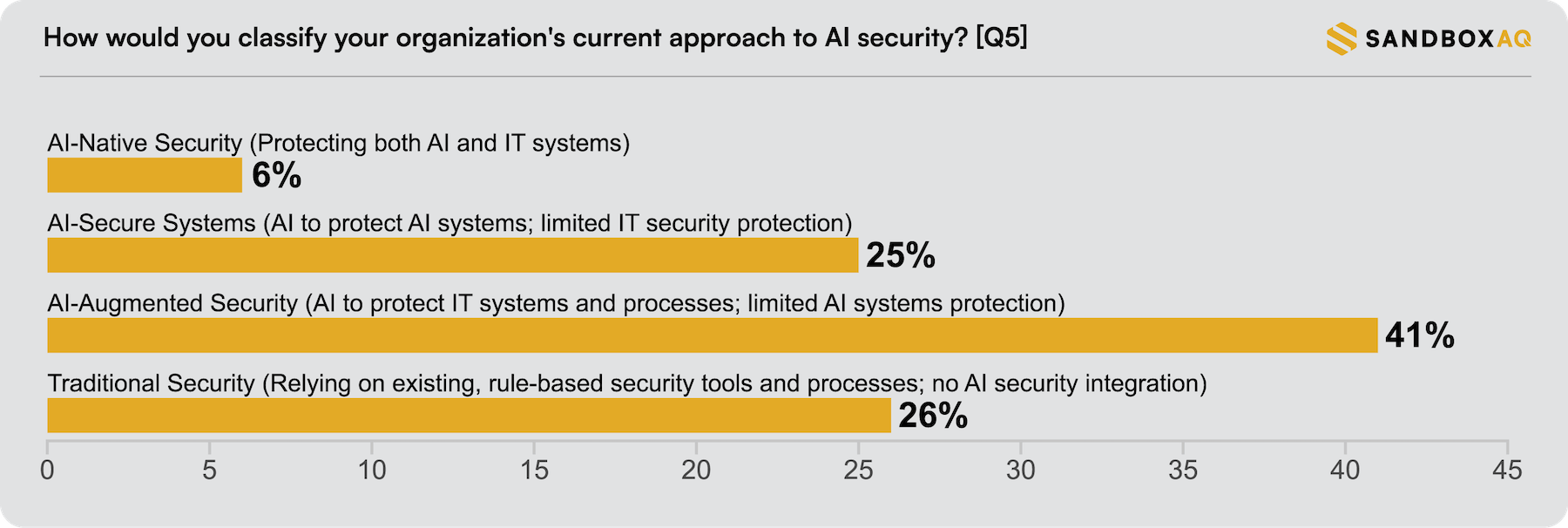
Download the full report to see where organizations truly stand and how the confidence gap varies by industry, region, and company size.
The Knowledge Paradox
The most revealing finding is that the more organizations actually know about AI security, the less confident they become. Technology companies that build these systems show dramatically lower confidence levels than other industries.

The full report reveals which sectors are most at risk and why this inverse relationship should be a wake-up call.
Three Critical Blind Spots Every CISO Must Address
- The Non-Human Identity Crisis: With 75% of organizations planning agentic AI adoption within three years, many are creating machine identities that operate at speeds traditional security can't match. These AI agents rely on cryptographic assets that most organizations can't even inventory.
- The Model Vulnerability Pipeline: While leaders express high concern about AI model risks, their investment priorities tell a different story. Organizations plan advanced AI architectures despite acknowledging they're unprepared for the security implications.
- AI-Generated Code Risks: Over 60% of executives worry about unintended malicious functionality in AI-generated code, yet most provide no specific AI security training to development teams.
The report includes comprehensive frameworks for addressing each blind spot.
The Investment Reality Check
Despite widespread concern about specific AI threats, the survey found concerning misalignment between what CISOs worry about most and where they're investing. Organizations often invest defensively in compliance rather than addressing their primary concerns.
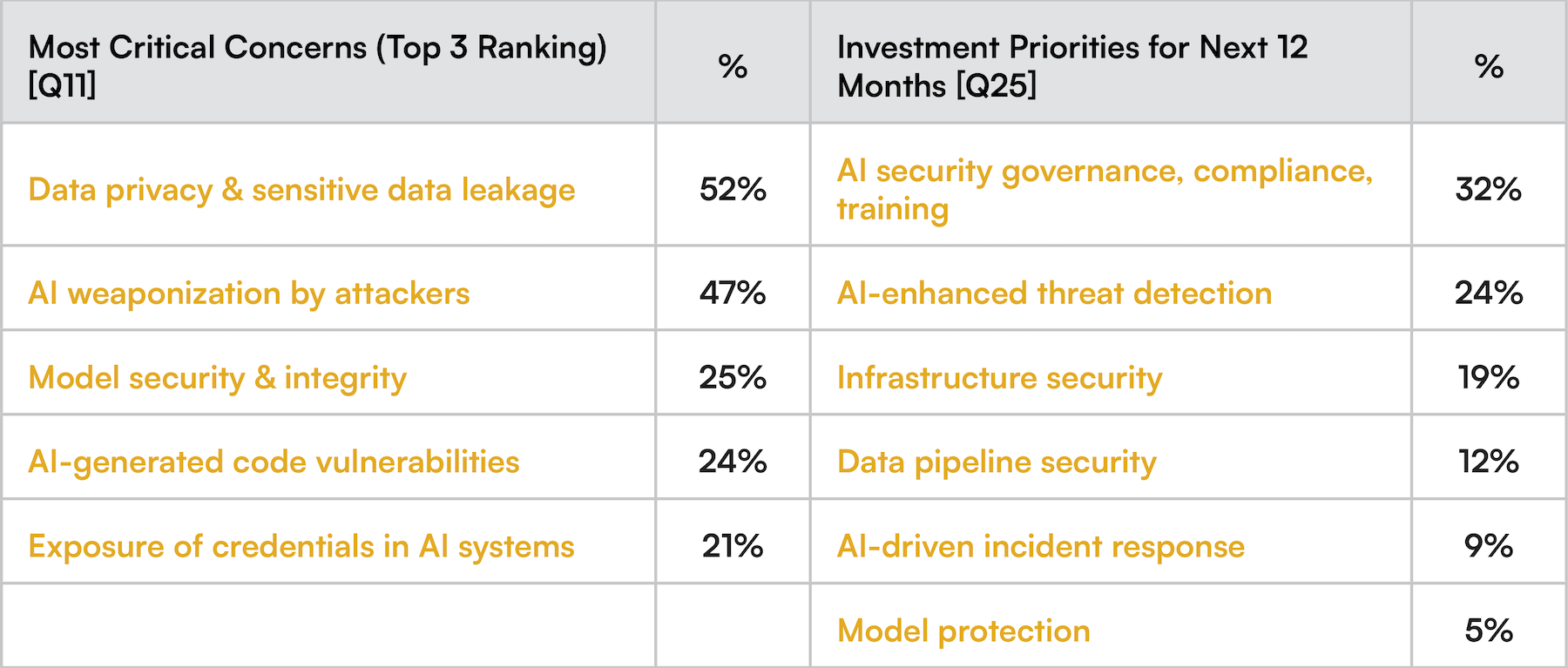
Download the report for complete investment analysis and strategic resource allocation guidance.
Why European CISOs Are Less Confident But More Prepared
European organizations demonstrate higher AI security maturity but show lower confidence than US counterparts. This "preparedness-perception gap" reveals something crucial about AI security readiness.
The Maturity Framework That Changes Everything
Our research establishes the first industry-standard AI Security Maturity Model with five distinct levels. Most organizations fall into the first two levels—creating both significant risk and competitive opportunity for those who act.
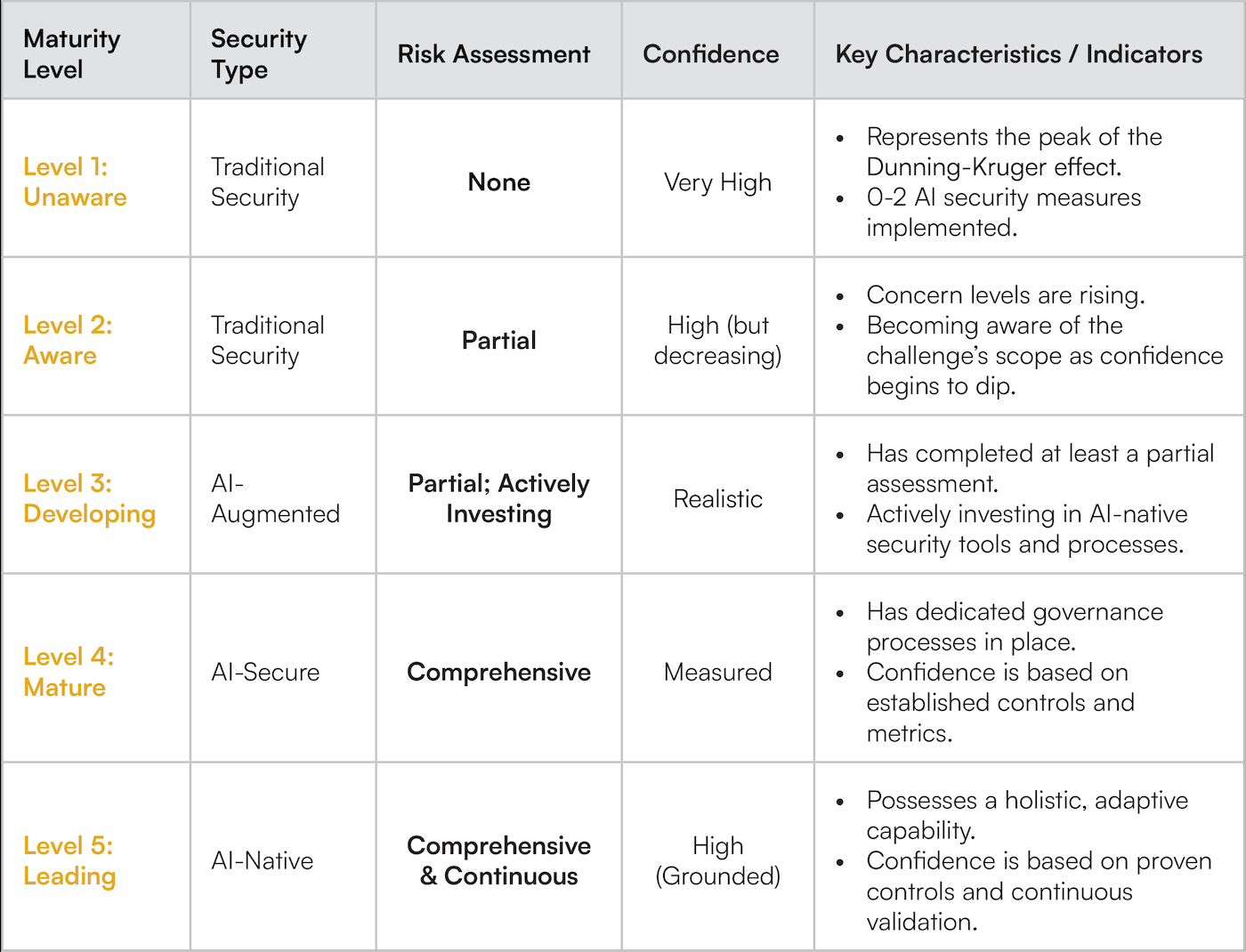
The complete assessment criteria and progression strategies are detailed in the full report.
The Bottom Line for CISOs
The confidence gap represents measurable operational risk that's growing daily. While security teams believe they're protected, adversaries exploit vulnerabilities in AI systems at unprecedented scale and speed.
The question isn't whether to act, but how quickly you can move from confidence to capability.
Ready to benchmark your organization's true AI security posture?
Download the complete 2025 AI Security Benchmark Report for detailed findings, the full maturity assessment framework, and implementation guidance from the 6% of organizations that have successfully achieved AI-native security.

